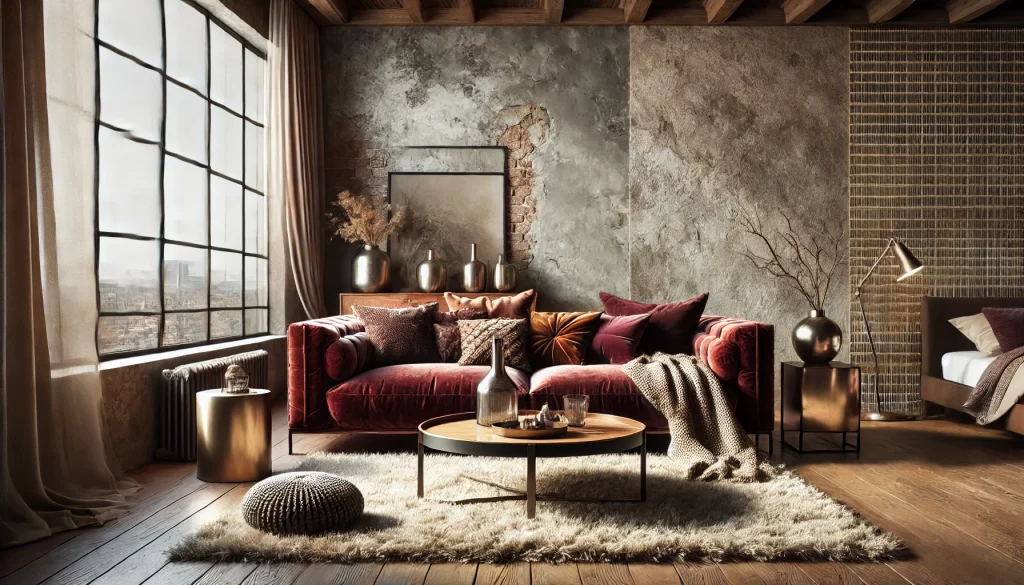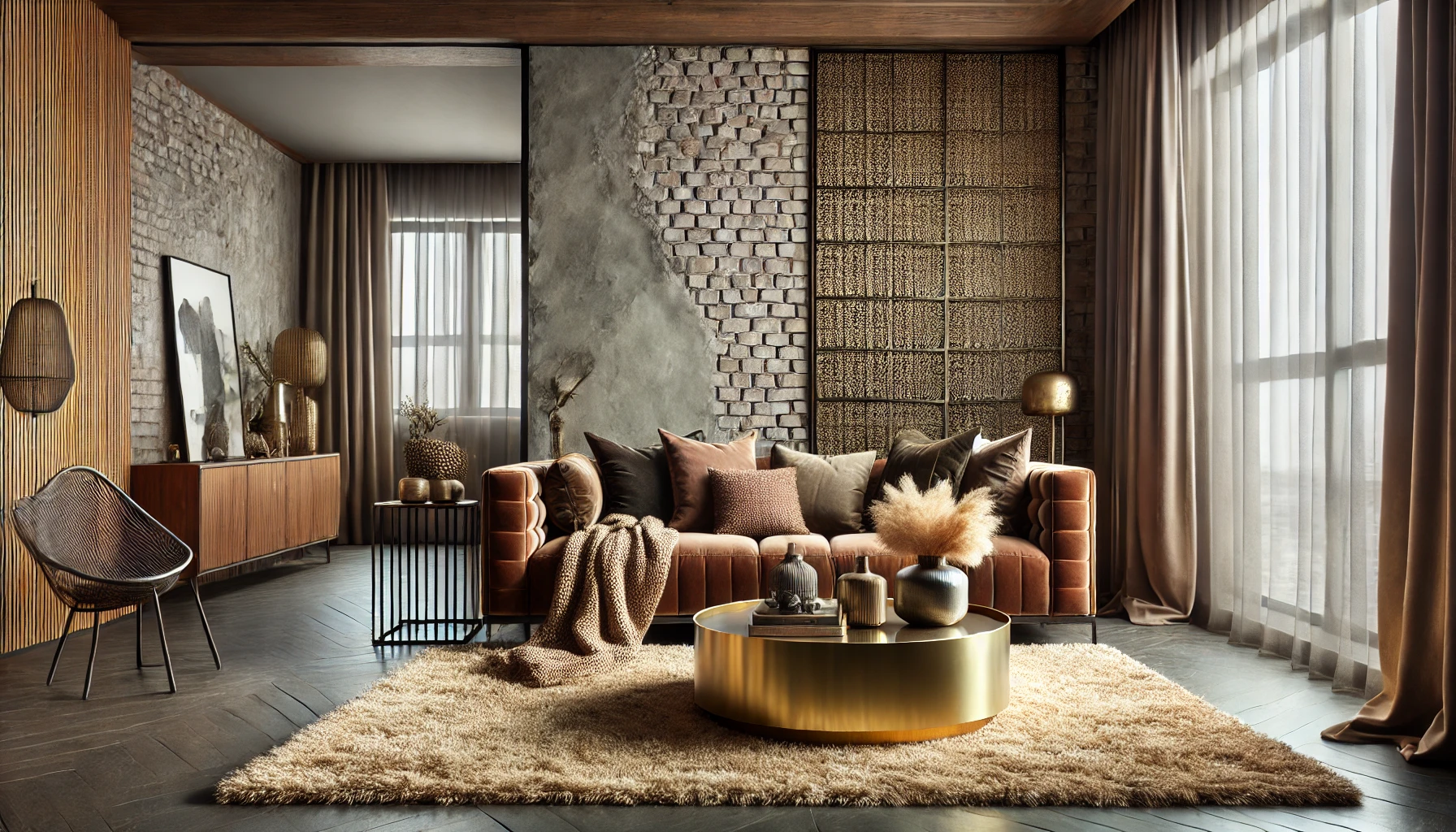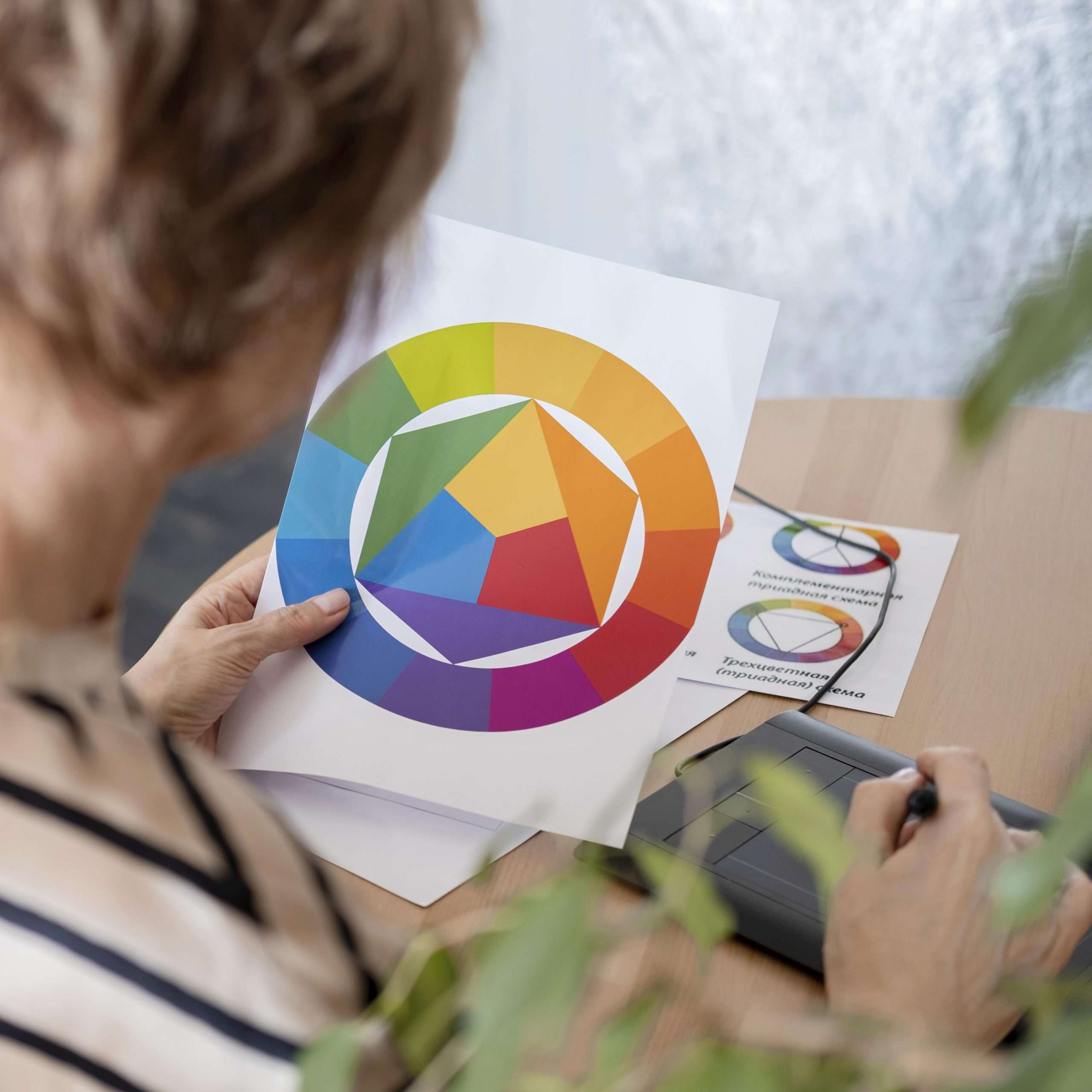Creating a beautifully designed interior is much more than choosing the right colors and furniture. One of the most impactful ways to elevate your space is through the art of layering textures. A texture is the secret weapon that can add depth, warmth and character to any room. Whether you’re aiming for a cozy, rustic vibe or a sleek, modern feel, layering textures is essential in bringing your design vision to life.

Let’s dive into how you can master the art of layering textures and transform your home into a multi-dimensional, inviting space. 🌟
Why Texture Matters in Interior Design?
When we think of texture, we often associate it with touch, but in design, texture also has a visual impact. Imagine walking into a room with flat walls, plain furniture and no contrast — the result is likely a space that feels cold and lifeless. Now imagine a room with plush rugs, soft cushions, sleek metal finishes and natural wood grain. Suddenly, the room feels richer, more inviting and full of personality.
Textures provide that sensory experience — both visual and tactile — that makes a room feel complete. By combining different textures, you create depth and interest, adding layers that appeal to our senses in ways color alone cannot.
Key Elements for Layering Textures
Layering textures is like crafting a well-balanced meal — you need a variety of elements to make it feel satisfying and rich. Here are some key materials and finishes you can mix and match to create beautifully layered spaces:
1. Soft Textiles for Comfort and Warmth
Textiles such as throws, rugs, cushions and curtains are the easiest way to introduce texture into any space. They add softness and create warmth, making a room feel cozy and inviting.
– Rugs: Whether you opt for a luxurious wool rug or a woven jute mat, rugs add instant texture to your floor. Don’t hesitate to layer rugs — a smaller patterned rug on top of a larger neutral one can add visual interest while defining different zones in a room.
– Throws and Cushions: Add variety by mixing velvet cushions with linen throws or a chunky knit blanket on a leather sofa. These different textures not only feel great but look stunning too.
2. Natural Materials for a Timeless Appeal
Bringing in natural materials like wood, stone and rattan adds an earthy, organic feel to any room. These elements ground the space and often provide a sense of timelessness.
– Wood: From raw oak dining tables to sleek walnut cabinets, wood adds warmth and texture. Whether it’s polished or rustic, wood brings an organic texture that pairs beautifully with softer materials like wool or velvet.
– Stone: Marble countertops, stone tiles or even a small stone sculpture can elevate a room’s tactile dimension. The cool, hard texture of stone is a perfect counterpoint to softer textiles, creating a well-balanced space.
– Rattan and Wicker: These materials introduce a bohemian, natural vibe. Think rattan chairs, wicker baskets or woven light fixtures. They add a rustic texture that can soften the clean lines of a modern interior.
3. Metallic Finishes for Contrast and Shine
Adding metallic elements like brass, chrome or gold brings a touch of glam and sophistication to a room. The sleek, reflective surfaces of metals provide a strong contrast to softer textures, creating a dynamic interplay.
– Lighting Fixtures: Choose statement lighting with metallic finishes to draw attention and add contrast to a room full of softer textures.
– Furniture Accents: Brass handles, chrome table legs or even metal-framed mirrors can introduce a modern edge to your space while providing an additional layer of texture.
4. Layered Wall Finishes for Depth
Don’t forget the walls! Beyond just paint, there are several ways to add texture to your vertical spaces.
– Wallpaper: Consider using textured wallpaper like grass cloth or embossed patterns to create a unique tactile experience.
– Wood Paneling: Adding wood paneling or shiplap can create a more dynamic look while adding dimension and interest to the room.
– Art and Decor: Layering art with different frames and textures or even wall-hangings like woven tapestries or macramé, adds depth and personality.
Tips for Mastering the Art of Layering Textures
Now that you understand the key elements, here are some tips to help you achieve a balanced and cohesive look:
1. Start with a Neutral Base
Starting with a neutral foundation allows you to easily add layers without overwhelming the space. Neutral tones like soft whites, grays and beiges are the perfect canvas for layering various textures making them pop without creating visual clutter.
2. Mix and Match Textures, Not Patterns
It’s important to keep a balance when mixing textures. While layering different materials is key, be cautious not to overdo it with too many patterns. Choose one or two statement patterns like a bold rug or patterned cushions and layer them with more subtle textures like soft linens or smooth leather.
3. Play with Proportions
Balance is crucial when layering textures. Pair heavy, chunky materials like wood or concrete with lighter, airier fabrics. If you have a large and plush sofa, balance it with a sleek metal coffee table or a thin glass side table.
4. Use Color to Harmonize Textures
Color plays an important role in making sure your textures complement each other. Even if you’re using a variety of materials, keeping them within the same color palette will tie everything together for a cohesive look.
Layering textures is an essential part of creating a well-designed, inviting space. It’s the art of mixing materials — from soft textiles and natural elements to sleek metals and bold finishes — that makes a room feel dynamic and full of character.
By playing with proportions, colors and materials, you can create a space that not only looks beautiful but feels warm, inviting and full of personality. So, don’t be afraid to mix it up! Layering textures is the key to bringing depth, dimension and life into your home.






